| visit1 | visit2 | visit3 | visit4 | |
|---|---|---|---|---|
| site1 | 1 | 0 | 0 | 1 |
| site2 | 0 | 0 | 0 | 0 |
| site3 | 1 | 1 | 0 | 0 |
| sitex | 0 | 0 | 0 | 0 |
Ocupación
Gracias a…
Salvador Mandujano

Diego J. Lizcano

Biólogo Universidad de los Andes, Bogotá-Colombia.
Ph.D. University of Kent, Canterbury, UK.
Ecología y Conservación de Mamíferos .
Especie favorita: Tapires.
Tu turno!
Tu turno!
En este Curso:
Vamos a usar:

Y les recomiendo tambien usar:
Ecología: Charles Krebs
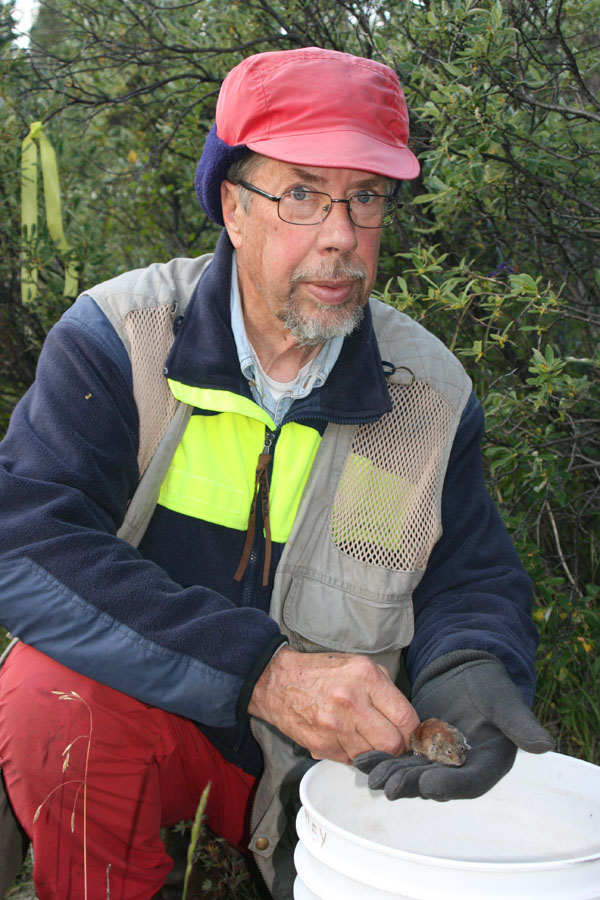
Ecología: Study of interactions that determine Distribution and Abundance
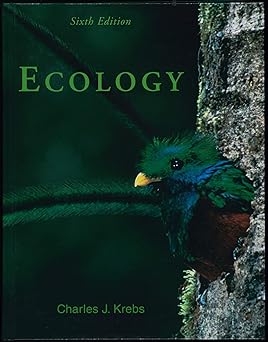
- Distribución:
- Dónde están los organismos?
- Abundancia:
- Cuántos organismos hay?
Contar animales no es un problema trivial…

Los animales se mueven!
Como ecologo, el mapa de los sueños!

En algún punto tuvimos que contar los canguros
Contar Animales

Fácil para animales conspicuos que no se mueven
Contar Animales
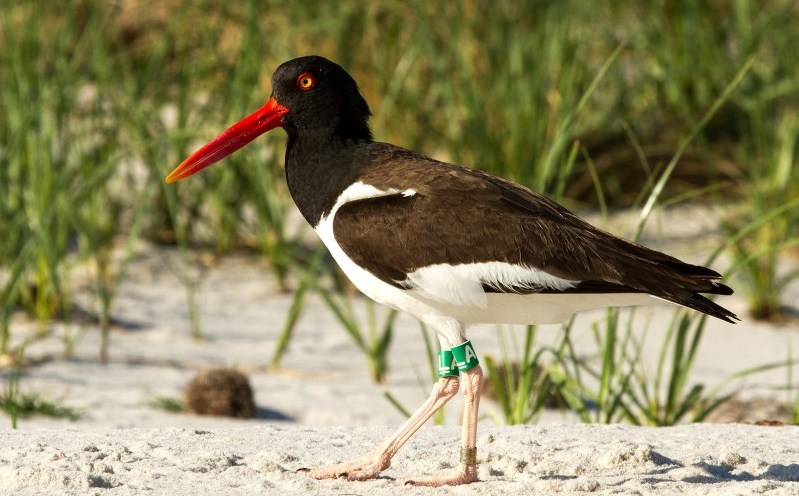
No tan facil si no se agrupan y se dispersan. Captura-marca-recaptura
Contar Animales

Para algunas especies Captura-marca-recaptura es demasiado costoso o impractico.
Relative abundance
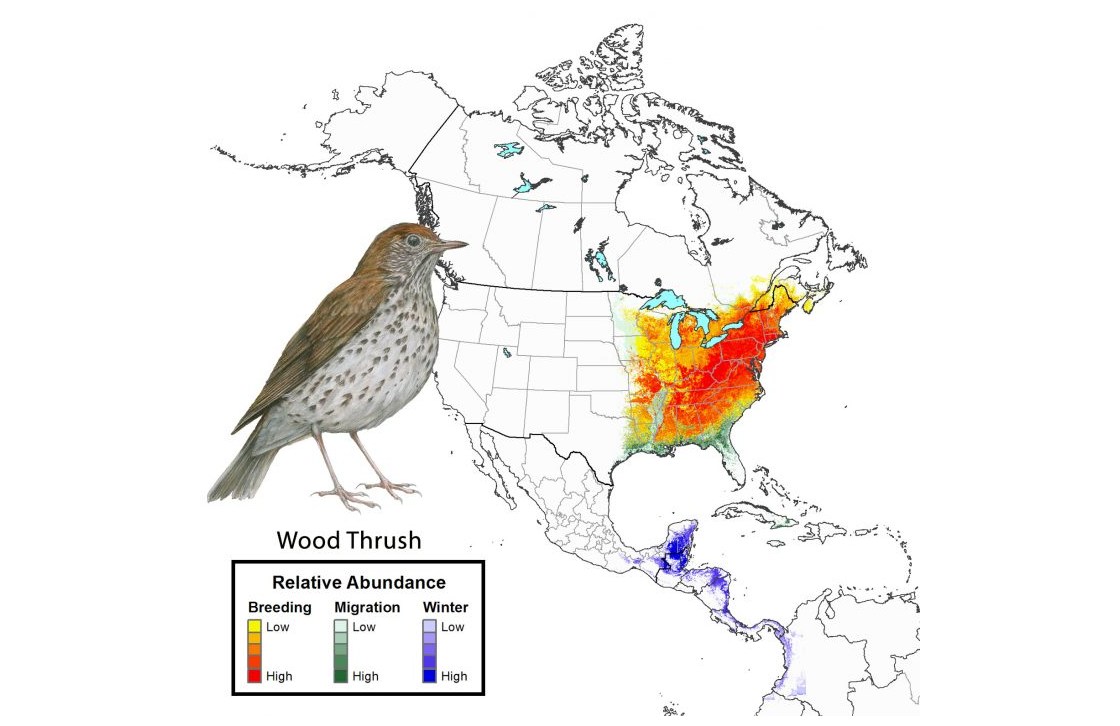
An indicator variable of the state of the population
I don’t know how many there are, but I do know where there are more and where there are less.
Sin embargo…

Animals move and hide (camouflage)
Nuestros nuestreos no son infalibles

Biologist are not super heroes. We make mistakes!
- Detectability and Imperfect detection concept
Detectability depends of
This error should be considered carefully to avoid bias in abundance estimates
Sampling conditions (weather, time).
The ability of the observer (sensor).
The biology of the species being sampled.
How the detection error occurs (Guillera‐Arroita 2016)
see ppt 
- It is an important error that must be considered in the sampling design!!!
Mackenzie et al 2002, 2003 to the rescue
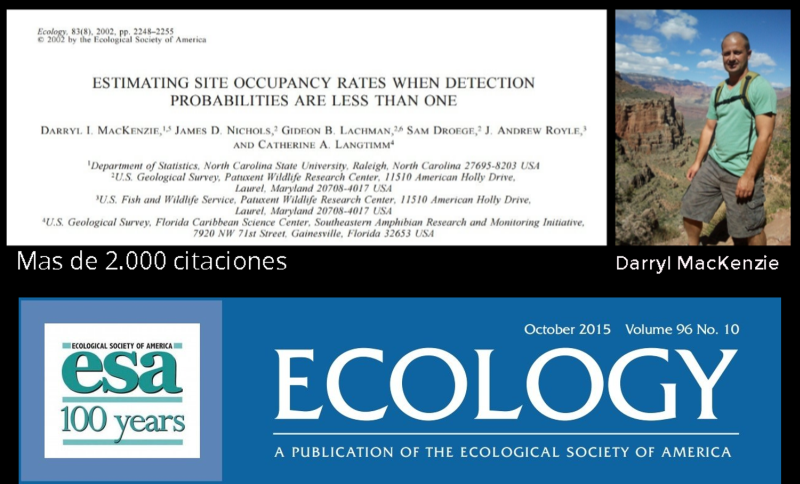
-unnoticed…
Book and presence program 2006
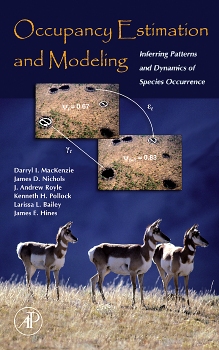
Mackenzie book
Book and presence program 2006
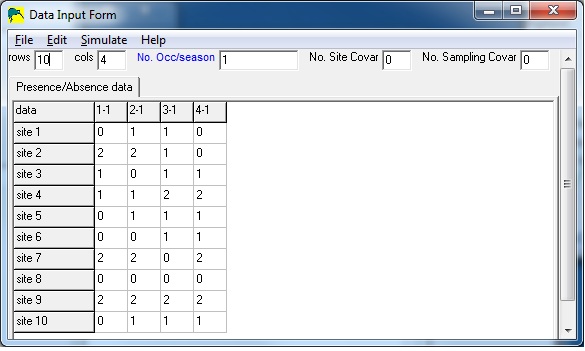
presence software
Mackenzie popularizes occupancy \((\psi)\) as a proxy of abundance taking into account detectability \((p)\)
Allows you to set goals and to monitor them over time.

Occupancy
\[\psi\]
Detection probability
\[p\]
- Occupancy is a reflection of other important population parameters such as density.
\((\psi)\) is the proportion of the sampled area that is occupied by the species.
By visiting the site several times I can be more sure that I detect the species when it is found in that place.
Repeated sampling are key.
\((\psi)\) It is influenced by environmental variables (Covariables) such as vegetation cover, altitude, precipitation, etc.
This is what a data table with repeated sampling should look like
Example
calculating \(\psi\) and \(p\) Frequentist method (Maximum likelihood)
| v 1 | v 2 | v 3 | v 4 | |
|---|---|---|---|---|
| s 1 | 1 | 0 | 0 | 1 |
| s 2 | 0 | 0 | 0 | 0 |
| s 3 | 1 | 1 | 0 | 0 |
| s x | 0 | 0 | 0 | 0 |
Example
calculating \(\psi\) and \(p\) Frequentist method (Maximum likelihood)
| Detection History |
|---|
| \(H_{1} \psi\) × p1(1-p2)(1-p3)p4 |
| \(H_{2} \psi\) × (1-p2)(1-p2)(1-p3)(1-p4)p4 |
| \(H_{3} \psi\) × p1p2(1-p3)(1-p4) |
| \(H_{4} \psi\) × (1-p2)(1-p2)(1-p3)(1-p4)p4 |
Histories Combined in a Model:
\[ \begin{aligned} L(\psi, p \mid H_{1},...,H_{x}) = \prod_{i=1}^{x} Pr (H_{i}) \end{aligned} \]
The model admits incorporating covariates to explain \(\psi\) and \(p\)
Bayesian method
calculating \(\psi\) and \(p\)
It is important to understand that there are two processes that can be modeled hierarchically
- The ecological process (\(\psi\)) follows a Bernoulli distribution.
- The observation model (\(p\)) follows a Bernoulli distribution.
The probability of observing the species given that it is present:
\(p = Pr(y_{i}=1 \mid z_{i}=1)\)
The Occupancy probability: \(\psi =Pr(z_{i}=1)\)
A hierarchical (Bayesian) model
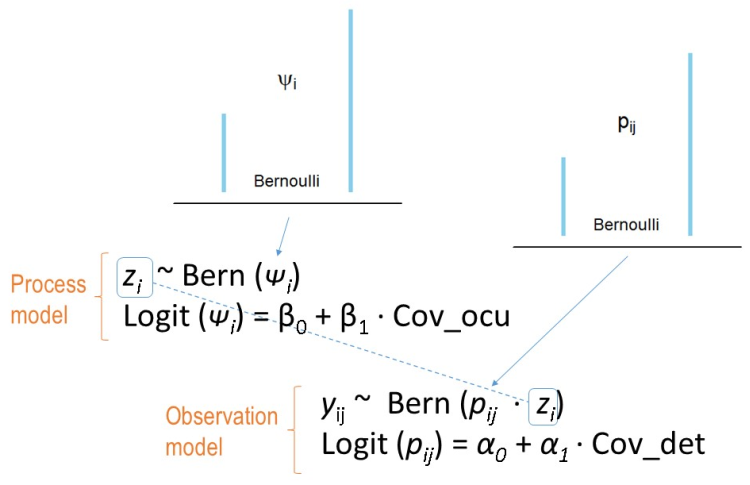
- Admits Covariates
Which one should I use? The maximum likelihood or Bayesian?
maximum likelihood
- Package unmarked
- In R
- Admits “automatic” model selection AIC
- Problems with many NAs
- Hesian problem. estimates ok.
- Difficulty from 1 to 10: 3 if you already know R.
Which one should I use? The maximum likelihood or Bayesian?
Bayesian
BUGS or Stan language, called from R - Model selection is not that easy, BIC is not suitable - You don’t have as many problems with many NAs in the matrix - Estimates are more accurate. - Difficulty from 1 to 10: 7 if you already know R.
New: Package UBMS
Going Deep
Dragon-fly book (2015)

by Marc Kery. More than 700 pages clearly explaining where the theory comes from, in a tutorial style, starting with a basic level of R to advanced models and their implementation in R and the BUGS language.
Dragon-fly book Vol. 2 (2020)
 Dynamic and Advanced Models provides a synthesis of the state-of-the-art in hierarchical models for plant and animal distribution, also focusing on the complex and more advanced models currently available. The book explains all procedures in the context of hierarchical models that represent a unified approach to ecological research, thus taking the reader from design, through data collection, and into analyses using a very powerful way of synthesizing data.
Dynamic and Advanced Models provides a synthesis of the state-of-the-art in hierarchical models for plant and animal distribution, also focusing on the complex and more advanced models currently available. The book explains all procedures in the context of hierarchical models that represent a unified approach to ecological research, thus taking the reader from design, through data collection, and into analyses using a very powerful way of synthesizing data.
Thanks!
Slides created via Quarto.
Contact: Diego J. Lizcano
Manos a la obra…
